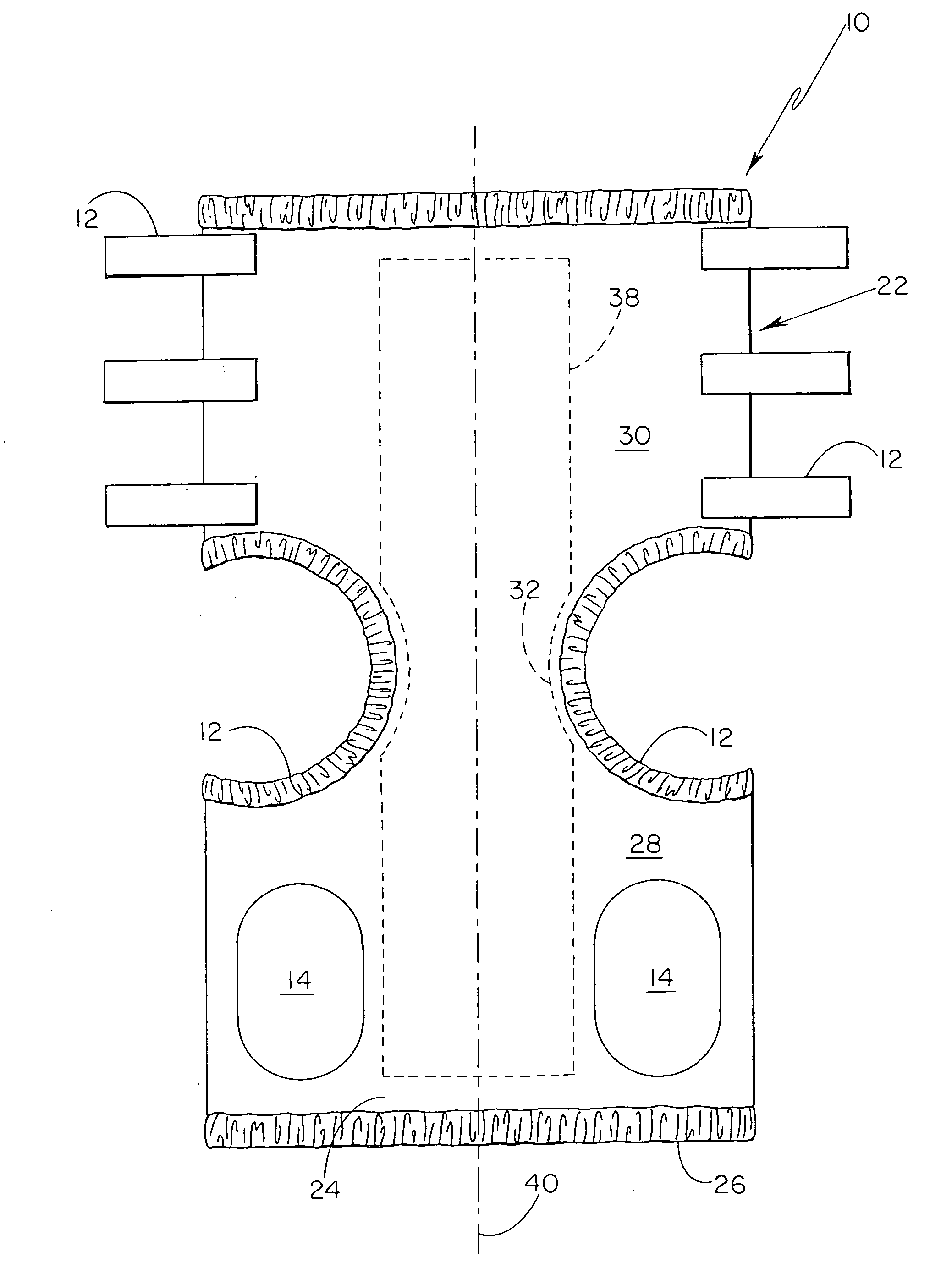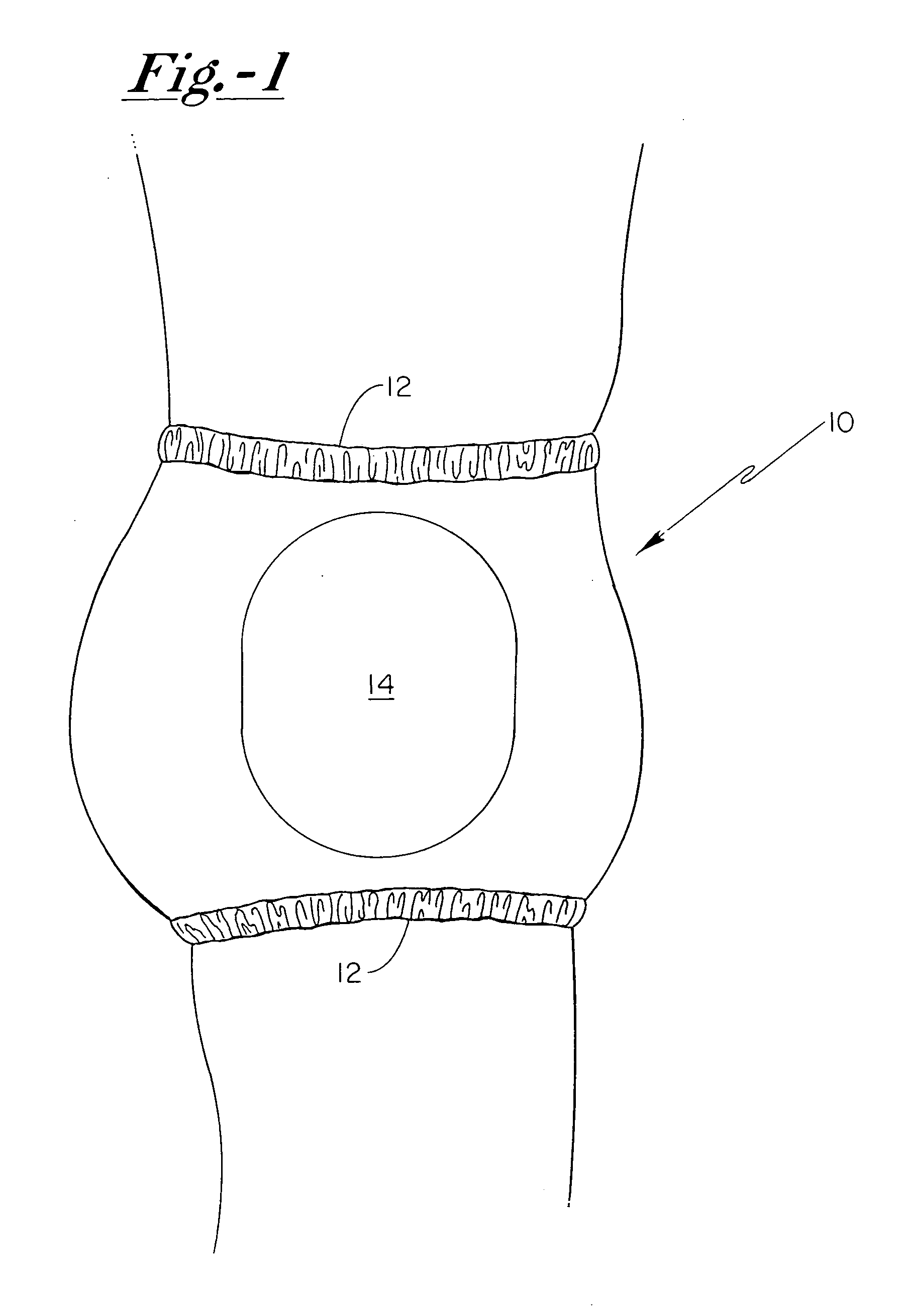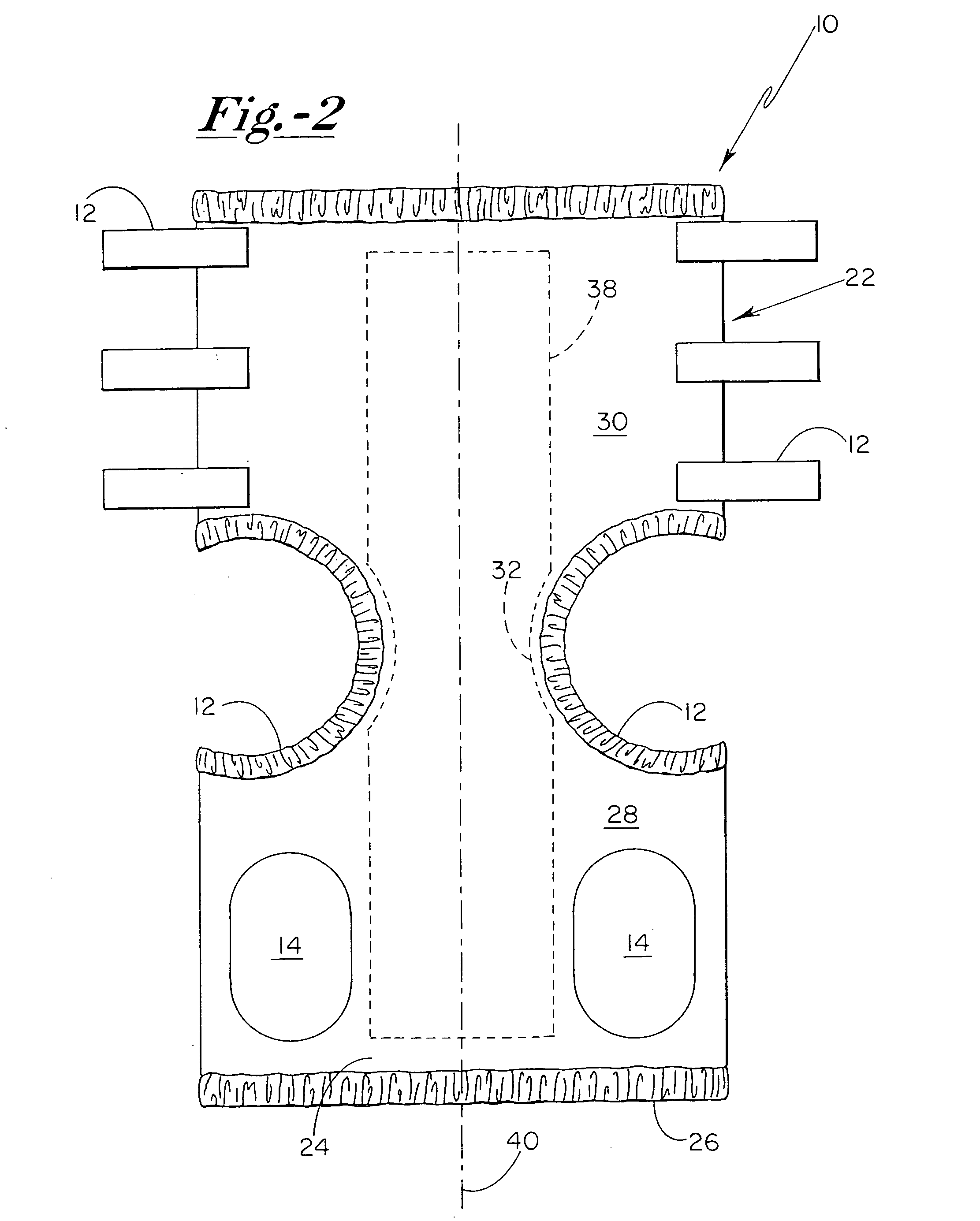Injury prevention apparatus
a technology of injury prevention and apparatus, applied in the field of protective elements, can solve the problems of increased health problems, increased risk of injury to elderly individuals, formation of decubitus ulcers, etc., and achieve the effect of inhibiting and/or preventing injury, and preventing injury to the user
- Summary
- Abstract
- Description
- Claims
- Application Information
AI Technical Summary
Benefits of technology
Problems solved by technology
Method used
Image
Examples
Embodiment Construction
[0027] The objects and advantages enumerated above together with other objects, features, and advances represented by the present invention will now be presented in terms of detailed embodiments described with reference to the attached drawing figures which are intended to be representative of various possible configurations of the invention. Other embodiments and aspects of the invention are recognized as being within the grasp of those having ordinary skill in the art.
[0028] With reference to the enclosed drawing figures, and first to FIG. 1, a protective garment 10 is illustrated as being properly worn by the user, such that garment 10 is operably positioned about the user's hips and between the user's legs. To assist in retaining a desired positioning on the user's body, garment 10 preferably utilizes suspension means 12, which may be in the form of an integrated elastic band or the like. Garment 10, however, may instead be suspended and retained on the user via tape, mechanica...
PUM
 Login to View More
Login to View More Abstract
Description
Claims
Application Information
 Login to View More
Login to View More - R&D
- Intellectual Property
- Life Sciences
- Materials
- Tech Scout
- Unparalleled Data Quality
- Higher Quality Content
- 60% Fewer Hallucinations
Browse by: Latest US Patents, China's latest patents, Technical Efficacy Thesaurus, Application Domain, Technology Topic, Popular Technical Reports.
© 2025 PatSnap. All rights reserved.Legal|Privacy policy|Modern Slavery Act Transparency Statement|Sitemap|About US| Contact US: help@patsnap.com



